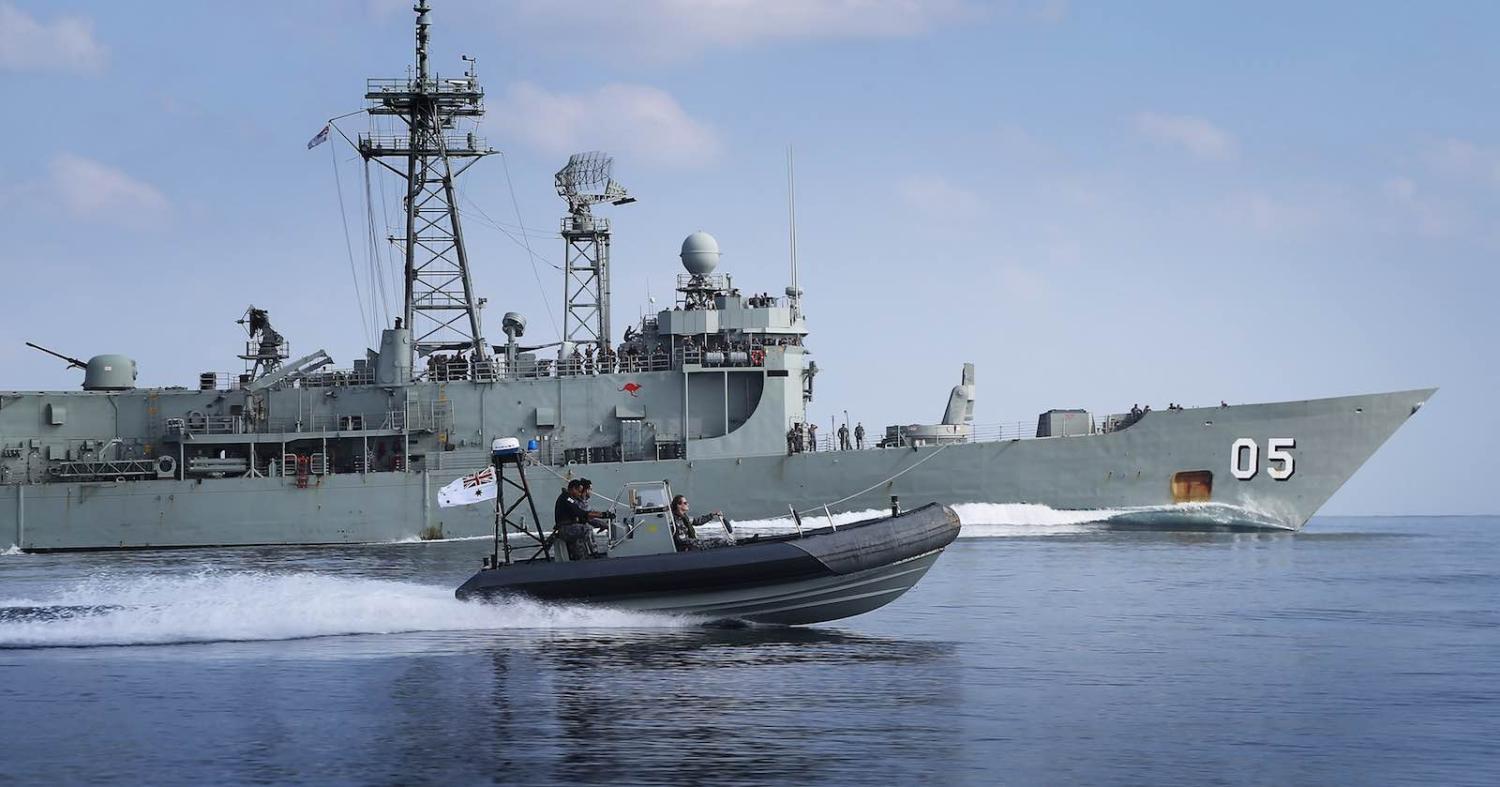The Australian government’s announcement today that it will contribute assets to a maritime coalition force in the Persian Gulf comes as no surprise, given the very public way the US request was delivered in Sydney at the recent AUSMIN meeting. Washington doesn’t make those type of requests unless it knows or expects it will get a positive response.
This coalition is proving as hard to build as was the Iraq invasion coalition, if for somewhat different reasons.
Australia is going to stump up with a ship, an aircraft, and a few staff officers. Hardly earth-shattering stuff. But this coalition is proving as hard to build as was the Iraq invasion coalition, if for somewhat different reasons.
There is little confidence in the strategic decision-making process at the White House. The US campaign of “maximum pressure” on Iran that got us to this point is more a series of tactical decisions with a vague strategic intent, displaying little understanding of the second-order effects of its actions. The prospect of putting assets under a US command that has great capability but little coherent strategic direction does not excite many countries.
My initial thoughts in the wake of Australia’s decision follow:
- The P8 Poseidon aircraft will deploy later in the year for one month, while the Major Fleet Unit (MFU) will deploy in January for six months. This is hardly indicative of a time-critical crisis.
- There is little rush from other nations to join. On 4 August, US Secretary of Defense Esper said that they had had a good response from allies and partners and that they expected more announcements in the coming days. Yesterday, Bahrain said they would join but not what they would contribute, and with today’s announcement by Canberra that means Britain, Australia, and Bahrain currently comprise the coalition.
- Is Australia simply re-gifting a MFU? We normally deploy a MFU for nine out of every 12 months in the Gulf region for a range of operational tasks as part of OP MANITOU. There was no word from the government as to whether Australia’s MFU is in addition to or in place of our OP MANITOU commitment. If the latter, we are simply re-tasking an asset that was being deployed anyway – a smart move politically, because Washington is simply after the additional flag Australia provides, and we were after an “announceable” to placate Washington.
- Without an understanding of our roles and tasks, command and control arrangements, or who will end up in this press-ganged coalition, it is hard to make definitive judgments on the types of operational risks that Australian forces will be exposed to. But the decision to reluctantly contribute was always about the political risks of not doing it, rather than the operational risks.

